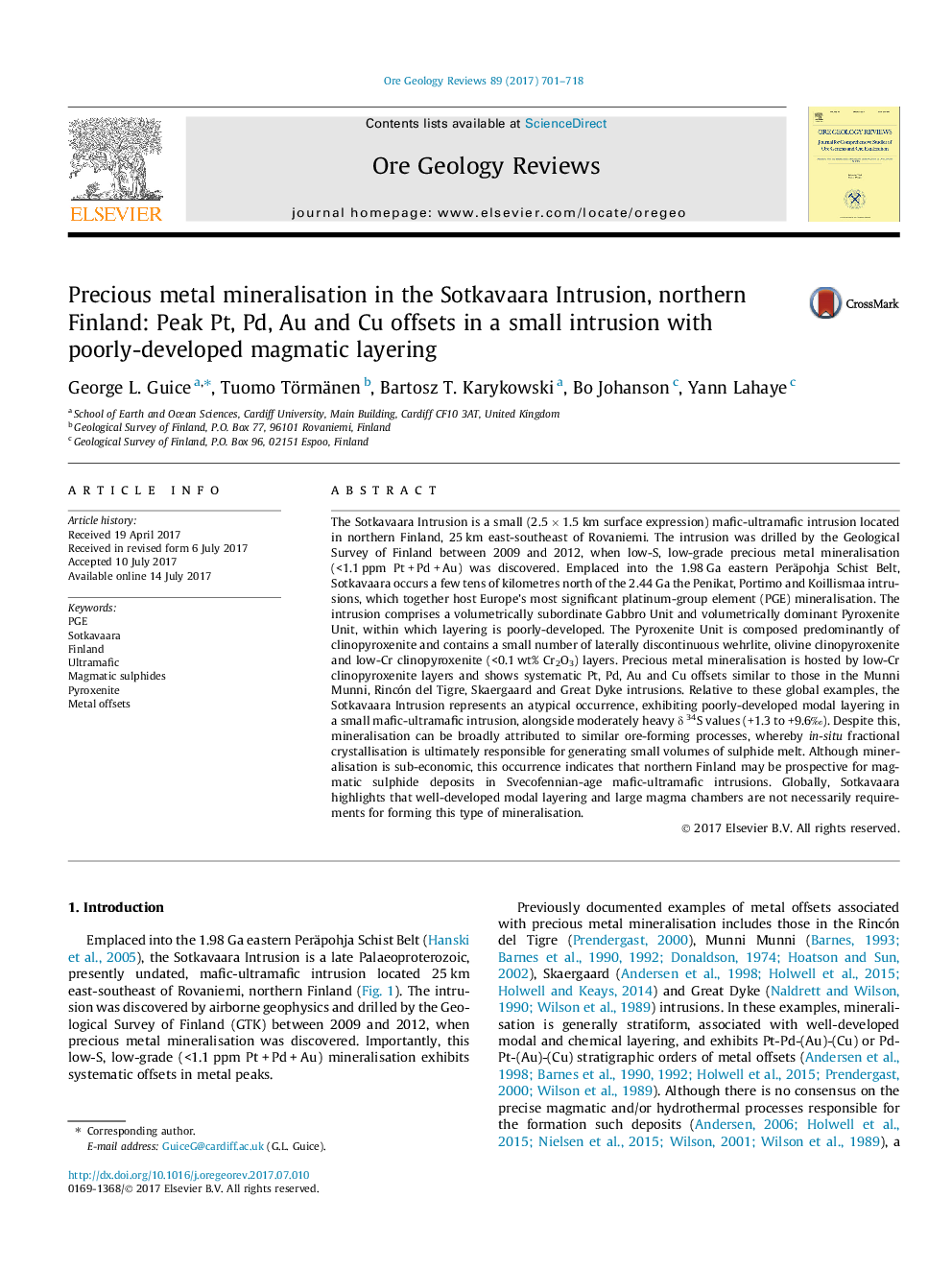| Article ID | Journal | Published Year | Pages | File Type |
|---|---|---|---|---|
| 5782262 | Ore Geology Reviews | 2017 | 18 Pages |
â¢Sotkavaara is a small mafic-ultramafic intrusion emplaced into the Peräpohja Schist Belt.â¢Precious metal mineralisation is hosted by low-Cr clinopyroxenite and shows offset metal peaks.â¢Sotkavaara represents an atypical example of this type of magmatic sulphide mineralisation.â¢Increased regional prospectivity of magmatic sulphide deposits in Svecofennian-age intrusions.
The Sotkavaara Intrusion is a small (2.5 Ã 1.5 km surface expression) mafic-ultramafic intrusion located in northern Finland, 25 km east-southeast of Rovaniemi. The intrusion was drilled by the Geological Survey of Finland between 2009 and 2012, when low-S, low-grade precious metal mineralisation (<1.1 ppm Pt + Pd + Au) was discovered. Emplaced into the 1.98 Ga eastern Peräpohja Schist Belt, Sotkavaara occurs a few tens of kilometres north of the 2.44 Ga the Penikat, Portimo and Koillismaa intrusions, which together host Europe's most significant platinum-group element (PGE) mineralisation. The intrusion comprises a volumetrically subordinate Gabbro Unit and volumetrically dominant Pyroxenite Unit, within which layering is poorly-developed. The Pyroxenite Unit is composed predominantly of clinopyroxenite and contains a small number of laterally discontinuous wehrlite, olivine clinopyroxenite and low-Cr clinopyroxenite (<0.1 wt% Cr2O3) layers. Precious metal mineralisation is hosted by low-Cr clinopyroxenite layers and shows systematic Pt, Pd, Au and Cu offsets similar to those in the Munni Munni, Rincón del Tigre, Skaergaard and Great Dyke intrusions. Relative to these global examples, the Sotkavaara Intrusion represents an atypical occurrence, exhibiting poorly-developed modal layering in a small mafic-ultramafic intrusion, alongside moderately heavy δ 34S values (+1.3 to +9.6â°). Despite this, mineralisation can be broadly attributed to similar ore-forming processes, whereby in-situ fractional crystallisation is ultimately responsible for generating small volumes of sulphide melt. Although mineralisation is sub-economic, this occurrence indicates that northern Finland may be prospective for magmatic sulphide deposits in Svecofennian-age mafic-ultramafic intrusions. Globally, Sotkavaara highlights that well-developed modal layering and large magma chambers are not necessarily requirements for forming this type of mineralisation.
Graphical abstractDownload high-res image (84KB)Download full-size image
